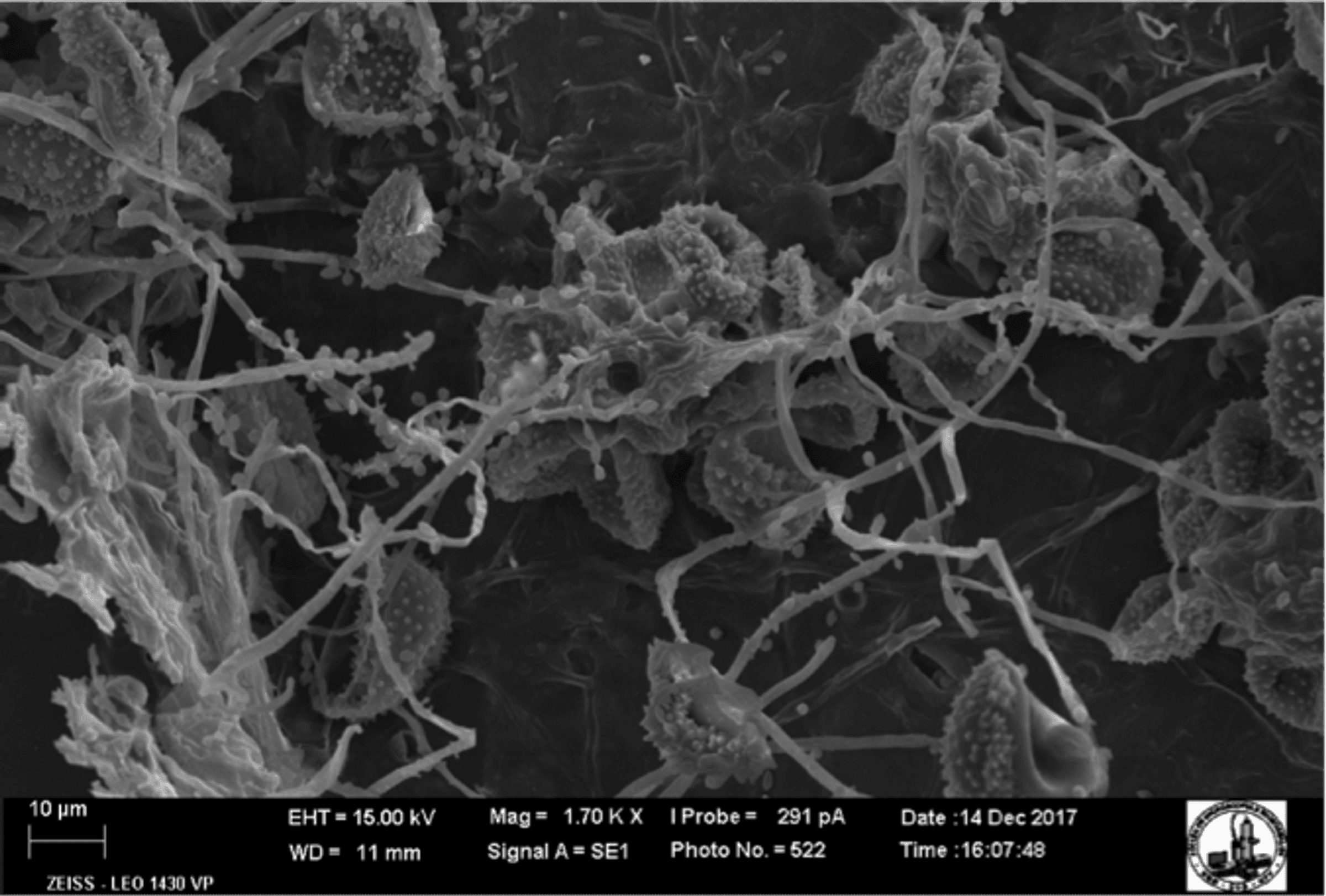Biological control of coffee leaf rust
WCR is funding research into reuniting coffee leaf rust with its natural enemies.

A pustule of H. vastatrix (coffee leaf rust) parasitized by unknown Sporothrix-like fungus (possibly new genus). Credit: Robert Baretto
Costly fungicides and pesticides aren’t the only way to control pests and diseases on a farm. Left alone, nature has developed complex and effective ways of reducing damage by diseases. Such natural control exists because every organism in nature has a range of natural enemies—competitors, parasites or predators—that are capable of reducing the size of its population. In the wild, coffee leaf rust has its own range of natural enemies.
When coffee and coffee leaf rust were removed from their place of evolutionary origin in Africa and began to be cultivated in new environments, rust was able to thrive and become more aggressive because it had left behind its natural enemies. Classical biological control reunites pests with their natural enemies.
Two types of fungi are known to be particularly important for coffee leaf rust. Fungi that “eat” other fungi such as coffee leaf rust are called mycoparasitic fungi. Other organisms, capable of living inside the tissue of the coffee plant and working as bodyguards, protecting the plant against attacks by diseases and pests like rust, are called endophytic organisms. Both types of beneficial organisms might be exploited on coffee farms as organic control products or sustainable tools for managing coffee leaf rust. World Coffee Research is working with researchers Robert Barreto and Harry Evans at Universidade Federal de Viçosa in Brazil to identify and evaluate such organisms to be used in the fight against coffee leaf rust.

Right now, the research continues with detailed evaluation of the physiological effect of promising mycoparasitic fungi on coffee leaf rust infection, disease development and plant health, as well as testing the beneficial impact of endophytic organisms in promoting healthy coffee plants and drought resistance.